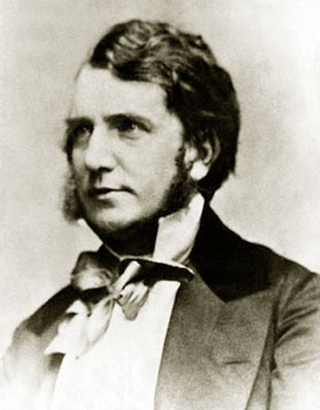
Joseph Thomas Sheridan Le Fanu was an Irish writer of Gothic tales, mystery novels, and horror fiction. He was a leading ghost story writer of his time, central to the development of the genre in the Victorian era. M. R. James described Le Fanu as "absolutely in the first rank as a writer of ghost stories". Three of his best-known works are the locked-room mystery Uncle Silas, the lesbian vampire novella Carmilla, and the historical novel The House by the Churchyard.

William Wilkie Collins was an English novelist and playwright known especially for The Woman in White (1859), a mystery novel and early sensation novel, and for The Moonstone (1868), which established many of the ground rules of the modern detective novel and is also perhaps the earliest clear example of the police procedural genre.
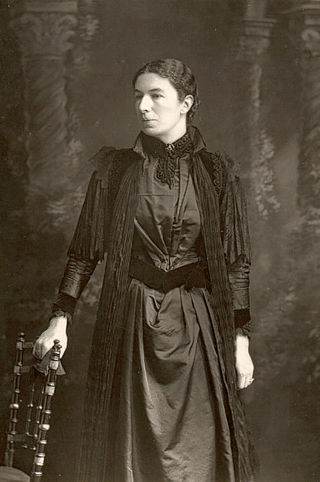
Mary Augusta Ward was a British novelist who wrote under her married name as Mrs Humphry Ward. She worked to improve education for the poor setting up a Settlement in London and in 1908 she became the founding President of the Women's National Anti-Suffrage League.

Brian Moore, was a novelist and screenwriter from Northern Ireland who emigrated to Canada and later lived in the United States. He was acclaimed for the descriptions in his novels of life in Northern Ireland during and after the Second World War, in particular his explorations of the inter-communal divisions of The Troubles, and has been described as "one of the few genuine masters of the contemporary novel". He was awarded the James Tait Black Memorial Prize in 1975 and the inaugural Sunday Express Book of the Year award in 1987, and he was shortlisted for the Booker Prize three times. Moore also wrote screenplays and several of his books were made into films.

Raistlin Majere is a fictional character from the Dragonlance series of books created by Margaret Weis and Tracy Hickman. Raistlin played an extensive role in the two main series of books, particularly in Dragonlance Legends in which he was both primary protagonist and antagonist. He is twin brother to Caramon Majere, half-brother to his protective sister Kitiara uth Matar, and a significant member of the Heroes of the Lance. In the animated movie adaptation, Dragonlance: Dragons of Autumn Twilight, Raistlin was voiced by Kiefer Sutherland.
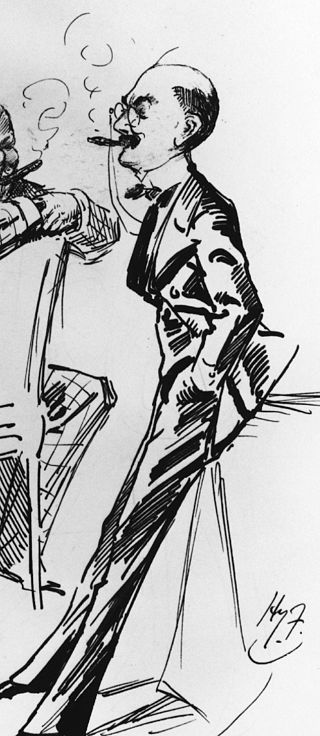
Thomas Anstey Guthrie was an English writer, most noted for his comic novel Vice Versa about a boarding-school boy and his father exchanging identities. His reputation was confirmed by The Tinted Venus and many humorous parodies in Punch magazine.

The Sword of Doom, known in Japan as Dai-bosatsu Tōge, is a 1966 Japanese jidaigeki film directed by Kihachi Okamoto and starring Tatsuya Nakadai. It is based on the serial novel of the same title by Kaizan Nakazato.
Black robe, blackrobe or variant may refer to:

The Woman in White is Wilkie Collins's fifth published novel, written in 1860 and set from 1849 to 1850. It started its publication on 26 November 1859 and its publication was completed on 25 August 1860. It is a mystery novel and falls under the genre of "sensation novels".
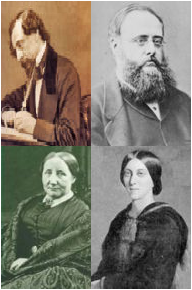
"A House to Let" is a novella written as collaborative fiction by Charles Dickens, Wilkie Collins, Elizabeth Gaskell and Adelaide Anne Procter. It was originally published in 1858 in the Christmas edition of Dickens's Household Words magazine. Collins wrote the introduction and collaborated with Dickens on the second story and ending, while Gaskell and Proctor wrote the third and fifth chapters respectively.
The bibliography of Charles Dickens (1812–1870) includes more than a dozen major novels, many short stories, several plays, several non-fiction books, and individual essays and articles. Dickens's novels were serialized initially in weekly or monthly magazines, then reprinted in standard book formats.
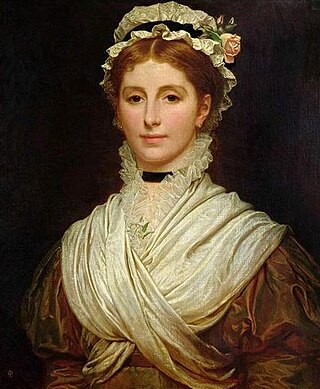
Catherine Elizabeth Macready Perugini was an English painter of the Victorian era and the daughter of Catherine Dickens and Charles Dickens.

Charles Amédée Forestier was an Anglo-French artist and illustrator who specialised in historical and prehistoric scenes, and landscapes.

I Am Number Four is a young adult science fiction novel by Pittacus Lore and the first book in the Lorien Legacies series. The book was published by HarperCollins on August 3, 2010, and spent seven successive weeks at #1 on the children's chapter of the New York Times bestseller list.
Lorien Legacies is a series of young adult science fiction books, written by James Frey, Jobie Hughes, and formerly, Greg Boose, under the collective pseudonym Pittacus Lore.

Who Killed Zebedee? is a short detective story by Wilkie Collins, first published under the alternate title "The Policeman & The Cook" in serial form in 1881. A young wife is convinced that, while sleepwalking, she has murdered her own husband, John Zebedee. Together, a young constable and the cook from the couple's final lodgings attempt to uncover the truth.
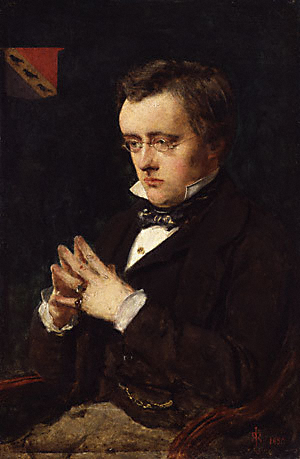
This is a bibliography of the works of Wilkie Collins.
Man and Wife is Wilkie Collins's ninth published novel, first published in 1870. It is the second of his novels in which social questions provide the main impetus of the plot. Collins increasingly used his novels to explore social abuses, which according to critics tends to detract from their qualities as fiction. The social issue which drives the plot is the state of Scots marriage law; at the time the novel was written, any couple who were legally entitled to marry and who asserted that they were married, either before witnesses or in writing, were regarded in Scotland as being legally married.
Hide and Seek is Wilkie Collins' third published novel, first published on 6 June 1854. It is the first of his novels involving the solution of a mystery, the elements of which are clearer to the reader than to the novel's characters. Suspense is created from the reader's uncertainty as to which characters will find out the truth, when and how.
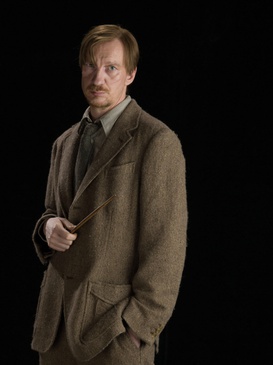
Remus John Lupin is a fictional character in the Harry Potter book series written by J. K. Rowling. He first appears in Harry Potter and the Prisoner of Azkaban as the new Defence Against the Dark Arts professor. Lupin remains in the story following his resignation from this post, serving as a friend and ally of the central character, Harry Potter. In the films, he is portrayed by David Thewlis as an adult, and James Utechin as a teenager.

















